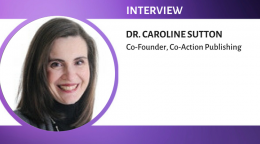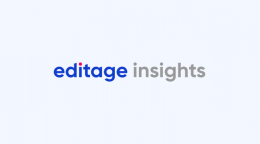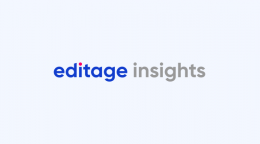How researchers can make the most of open access publishing

ScienceOpen is an independent start-up founded by Tibor Tscheke and Alexander Grossmann in 2013. It operates from Berlin, Boston, and Budapest. The technology behind the ScienceOpen platform is provided by Ovitas, a CMS-WorkFlow-XML software architecture company. ScienceOpen functions as a new platform for scientific communication. From joining informal networks and peer reviewing to open access publishing, authors can use it in a variety of ways. Within a short time, ScienceOpen has gained popularity as a vigorous proponent of open access publishing as well as a sort of driving force for changes to conventional publication system. The highlight of the platform is the integration of a pre-publication peer review model whereby authors do peer reviews for other researchers.
In this interview, I talk to Stephanie Dawson, the CEO of ScienceOpen, to know more about the company as well as discuss some broader issues around open access publishing. Here, Stephanie shares her thoughts on broader aspects of academic publishing. She talks about how post-publication peer review helps communicate science faster, thereby enabling researchers to solve some critical issues in time. She also dismisses the theory that post-publication peer review results in poor quality research. Stephanie shares some major issues in academic publishing and goes on to talk about the potential of digital technology and social networking platforms. We end the interview with some words of advice for young researchers.
About Stephanie Dawson: Following a degree in Biology at Yale University, Stephanie Dawson worked at the labs of Susan Parkhurst at the Fred Hutchinson Cancer Research Center in Seattle, Washington, and Ralph Rupp, at the MPG Friedrich Miescher Laboratory in Tübingen, Germany. After this, she changed fields and chose to complete a PhD in German Literature from the University of Washington. From 2001-2012, she played various editorial and publishing roles at the academic Publisher De Gruyter in Berlin. At De Gruyter, she was in involved in journals and book publishing in the fields of biology and chemistry. Stephanie joined ScienceOpen in July 2013 and hasn’t looked back since!
Your academic journey is interesting. After a BS in biology, you proceeded to complete a PhD in Germanic Languages and Literatures! Why the huge shift?
I grew up on a ranch but books were my first love as a child, so from early on, I was committed to both humanities and science. I did my undergraduate work at Yale University and took many classes in literature, history, and arts next to my biology studies. After university, I worked on Drosophila genetics with Susan Parkhurst at the Fred Hutchinson Cancer Research Center in Seattle and was preparing to apply for a PhD when I developed a severe allergy to fruit flies and could no longer work in the lab. I was going to have to change fields. Learning the genetics of a new experimental animal is like learning a new language, so I decided to make a more radical change and try studying German literature, something that had fascinated me for years. I greatly enjoyed my time at the University of Washington and my German studies sent me on an exciting journey.
When and how did you develop an interest in publishing?
Studying in the humanities gives one a tremendous respect for text and books, as they are the central research object. So I had a basic understanding of the publishing landscape even as a grad student. When I moved to Berlin to be with my German husband and thought about what I could do there, my first destination was the prestigious publisher De Gruyter. As a native English speaker with a science background, I was a good fit for the journal publishing department, where I started working as a journal manager. I worked my way through various roles – text-book editor, acquisitions editor, and editorial director – and learned a lot about publishing along the way.
But an editor is really an advocate for their authors and as the open access movement began to gather steam, I became more and more convinced that it was in the author’s best interest to publish their work with a CC-BY license that allowed free sharing on the Internet. I began to feel guilty about convincing authors to publish something with me that only a very limited audience would have access to at a high price. So when I had the chance to leave a prestigious job at a venerable 260-year-old publishing house for a start-up based on the principles of open access, I jumped at the opportunity.
What are your duties as CEO of ScienceOpen? And how far is your current role aligned to your interests?
As CEO of ScienceOpen, I am doing exactly what I want to be doing – promoting openness in scientific research via strategic infrastructural changes as well as advocating open science on a personal level. We are a relatively small start-up, which means that the CEO works closely with strategic business partners as well as buys paper towels and empties the dishwasher. I work with the tech team in Budapest and Boston to help make our vision a reality, interface with partners like CrossRef, ORCID, and Altmetric, as well as talk to publisher customers and individual users to integrate their feedback. And I represent ScienceOpen in the public wherever I go. I am deeply and passionately committed to this project.
Several initiatives like ScienceOpen are adopting post-publication peer review. But there seems to be a general lack of trust about the quality of research that is disseminated under this process. To what extent, do you think do pre- and post-publication peer reviews enhance (or not) the quality articles of published research?
I am taking the strategic long-view on the question of post-publication peer review. When I look around, I see an explosive growth in pre-print servers that are putting research out there fast. Why? Because we need solutions to threats like the Zika virus right now, not years later! Other researchers are moving forward on these pre-print results and giving feedback to the authors on the go. That is the potential of post-publication peer review. It happens right now and faster than those opposing it want to believe, because the internet makes it possible. The process is also more efficient. At ScienceOpen, we are merely trying to provide a space to formalize it and give reviewers credit for their feedback.
You are right that there have been several concerns about the quality of reviews under this model. But the same voices had also warned that the open access model would yield only low quality articles because authors pay to publish their work. By now, I think, we have seen that these fears were unfounded. These conservative voices are too cautious for me. I believe that good scientists will certainly ignore the low quality articles. But we also need to make sure they find the high quality gems out there. As the research output from South America, Africa, and Asia continues to grow, the same group expresses concerns about low quality of research output from these areas. But what if we opened up all this research to a post-publication peer evaluation so that excellent work can be found and used, regardless of where and how it was published. I believe that post-publication peer evaluation and feedback can help researchers everywhere improve their work. Currently, a very small number of journals and publishers have a stranglehold on “quality”. I think post-publication peer review could change this, and, of course, there are some who fear this kind of democratization.
You once asked Damian Pattison, Editorial Director of PLOS ONE, if he could “imagine another metric which would better measure the output of journals like PLOS ONE” – this was in the context of your discussion with him about the misuse of the impact factor in scholarly publishing. What would you say to this today?
I truly don’t care about the impact factor because I think that journal level metrics are losing importance. What really matters is the research article – how often was it cited, discussed in social media, reviewed, added to collections, mentioned in policy documents, used a source on Wikipedia, and so on. Several years ago, very few researchers knew their h-index, an author-level metric based on the number of article citations, completely independent of the journal impact factor. Now I rarely meet scientists who aren’t concerned equally about the number of their own citations as the impact factor of the journals they published in. I believe that more and more open, structured research articles available for data- and text-mining together with new data computing methods are going to come together to make something even cooler. I am sure of that. But whatever metric we come up with, it will be based on the article (or even pieces of the article such as data or methods) and not on the journal. That’s the direction I see us heading towards.
You travel extensively and attend several global events related to academic publishing. What are some of the concerns related to academic publishing that are commonly raised at these events?
Having just returned from the Society for Scholarly Publishing (SSP) annual meeting in Vancouver, my head is still full of publishing related issues.
The discoverability of a single article is a topic that is increasingly in focus. At the SSP, it was expressed as the importance of persistent identifiers in making scholarly output more discoverable. ORCID is an excellent example. The more we know exactly which author is attached to which paper, the easier it is, for example, to create metrics to measure impact. Ideally, we would like to have normalized information on the funding body, grant number, institution, license and all machine-readable components embedded in the XML of an article. This is what a really good publisher should offer, and if an author is looking for a journal, this is the one thing that I would recommend they should ask about.
Big data, data- and text-mining, machine-readability, data publishing – these are topics that are becoming increasingly important and make an appearance at every meeting of academics, communication specialists, societies, and publishers. The power of the Internet is making itself felt.
What is the one thing about open access that you never tire of sharing/talking about?
Two things really. One: academic publishing is unlike the creative outputs of novelists, musicians, and artists. We, the taxpayers, pay researchers a salary to generate knowledge for us – which we should all have a right to access, in my opinion. We also pay researchers to solve big, complex global problems like environmental sustainability, mobility, health, or food security. We have only one planet and all have to live on it together. So we should do whatever it takes to support scientific development that supports our existence on this planet. And scientists do need fast and easy access to information to drive innovation and discovery. Thus, I see a strong moral imperative for open access that is very different from downloading pirated movies.
Two: The numbers speak for themselves – every year, more than 2 million scholarly articles are added to existing scientific literature and this number is growing fast. Machine reading is going to be a major force in scientists’ processing of new information in the future. A computer does not care about the impact factor of the journal you published in, but it does care whether it can “read” the full text of your article and process the XML tags. If you want your article to truly be part of the usable body of research literature, it is going to need a CC-BY license, good solid XML tagging, and persistent identifiers. Open access is not just about APCs; it is about making the flow of information more efficient to solve big scientific problems.
About a year ago, you blogged about how “China needs Open Access and the Open Access movement needs China”. Could you elaborate?
China will soon outspend the European Union and the United States on research and development. That means, as I have mentioned above, a huge amount of top research will enter the current academic publishing system. There are too few super-selective “high impact” journals to absorb all this research and new journals are consistently choosing an open access model. Moreover, Thomson Reuters Web of Science state that that they only accept about 10-12% of journal applicants per year; this means that very few new (open access) players are able to join the system. That is slowing us down! China could push open access by mandating and enforcing Creative Commons licenses on all government-funded research output, and by making open access a higher imperative than impact factor.
At the conference I attended in Shanghai, all of the publishers were focused on the common goals of “digital” and “global”. But the next step after digital is machine-readable. And global happens only when information can circulate freely. On account of its sheer research output, China has the potential to be a major force in the global momentum towards open access.
What advice would you have for researchers looking to get published?
Be pragmatic and keep your career in mind when choosing a journal for your work. But for me that means publishing with a CC-BY license, so that your work can be easily found and used by others. Today, nearly every journal offers some kind of open access option. As the focus of tenure committees and funding bodies shifts to article-level metrics, open access is even more important. When I sort my search results on ScienceOpen by Altmetric score, the top scores are almost always for open access papers. Open access will get you read more often and that can translate into citations, collaborations, and much more.
Take advantage of pre-print servers to solicit feedback from peers. But since anything in public record is there to stay and the internet has a long memory, I would also strongly recommend getting professional editorial help with your writing before making it public. This will help you ensure that your research has been presented well and communicates your message effectively. But there are also mentors, colleagues, and collaborators to check your science. Do your own peer review before you make your work openly available. Don’t expect the publisher to take care of everything. The truth is, no one will care as much about communicating your work as you do. And once you make it public, don’t be shy. Seek out a discussion; promote your work in social networks; post a PDF of your paper on your webpage, institutional repository, or any network you belong to. You never know what new ideas you might inspire!
That is very solid advice, Stephanie! Thanks for this interview.
Read the first part of our interview with Stephanie.
Published on: Jul 18, 2016
Comments
You're looking to give wings to your academic career and publication journey. We like that!
Why don't we give you complete access! Create a free account and get unlimited access to all resources & a vibrant researcher community.

Subscribe to Journal Selection
After writing a research paper, the next step is to find the right journal to publish it. Subscribe and get curated content to find the perfect journal that will give impetus to your research paper and your career.






